Aquatic Macro-invertebrates
As part of a water unit, middle-school students from Paulo Friere Freedom School in Tucson, Arizona visited Agua Caliente Park to collect aquatic macro-invertebrates. They intended to use these organisms to calculate a biotic index for the main pond at Agua Caliente.
Audio Accounts of the Water Unit
 Listen to Paulo Freire Freedom School Watershed Unit Podcast. Part 1 Sweetwater Wetlands Group 1
Listen to Paulo Freire Freedom School Watershed Unit Podcast. Part 1 Sweetwater Wetlands Group 1
 Listen to Paulo Freire Freedom School Watershed Unit Podcast Part 1 Sweetwater Wetlands (Group 2)
Listen to Paulo Freire Freedom School Watershed Unit Podcast Part 1 Sweetwater Wetlands (Group 2)

Students by the main pond at the park. © 2006 Beth Frost

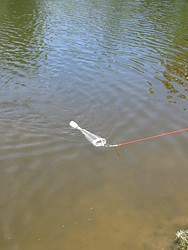
Dragging the plankton net to gather plankton. © 2006 Kathryn Orzech
Aquatic Macro-invertebrates Found at Agua Caliente Park:
| Organism | Image |
| Damselfly | 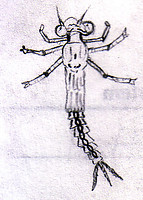 © 2006 Watershed36
|
| Dragonfly Nymph |
|
| Water Scorpion |
|
| Mosquito Larvae |
|
| Mystery Organism (Midge Fly Larvae?) |
|
| Rotifer (Zooplankton) |
|
Fish Found at Agua Caliente Park
Many students were more interested in the minnows and other small fish found near the edge of the pond and chose to examine those instead.

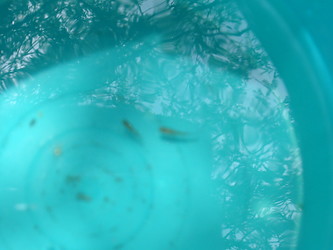
Captured minnows awaiting observation© 2006 Kathryn Orzech
We had viewers that enabled students to look at their fish from the top and the side so they could draw them more effectively.
Here are a few fish drawings done by students:
|
|
|
|
|
|
|
Information on the Internet
- Critter Clues Activity for Grades 3-6 This page introduces the idea of a biotic index and has an easy-to-use visual biotic index pictured near the bottom of the page.
- Minnesota Fishing Museum Chart for Organisms This page shows a chart with common and scientific names for common aquatic macro-invertebrates and also shows their level of pollution tolerance.
- Leaf Pack Network Data Analysis This site is written more for adults but has a biotic index chart with common and scientific names of organisms and also a chart showing the cutoffs for Excellent, Good, Fair and Poor water quality based on the biotic index.

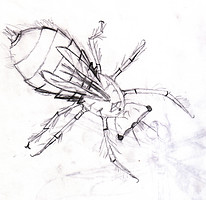
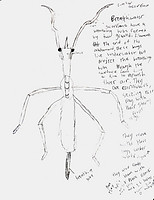
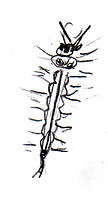
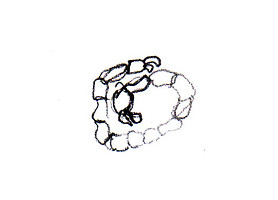
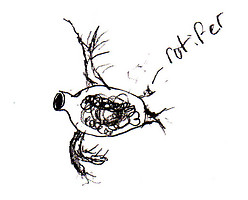
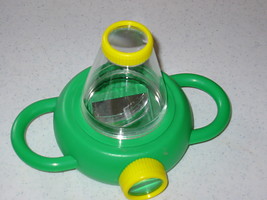
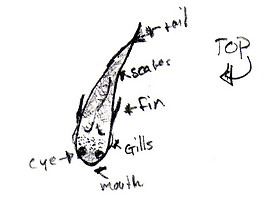
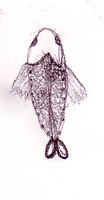


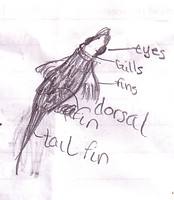
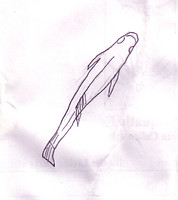



 Go to quick links
Go to quick search
Go to navigation for this section of the ToL site
Go to detailed links for the ToL site
Go to quick links
Go to quick search
Go to navigation for this section of the ToL site
Go to detailed links for the ToL site